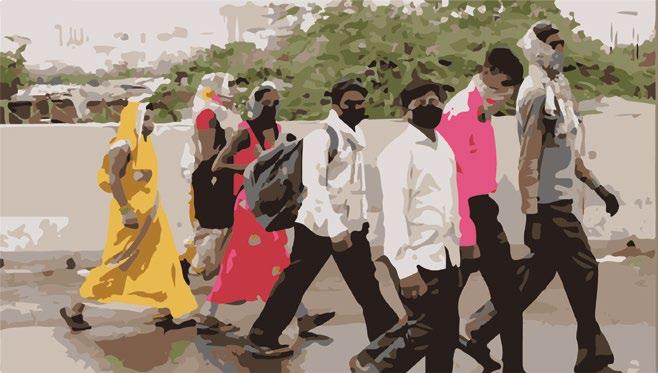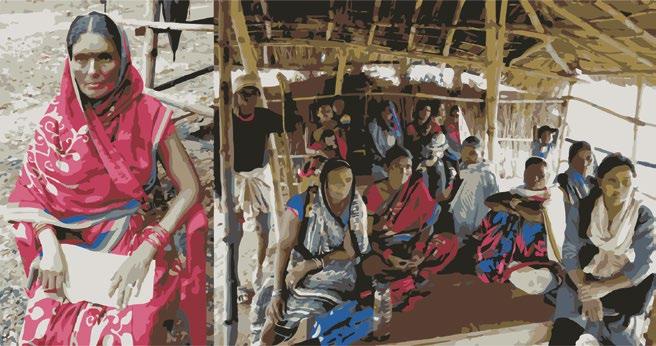Image: Watson Institute, Center for Contemporary South Asia
Migrant workers: Vulnerability showcased during the COVID-19 Pandemic Internal migration is common in India, primarily for employment purposes. According to the data from the last census (2011), the total number of internal migrants in India was 45.36 crore (over 450 million) or 37% of the country’s population. This includes interstate migrants as well as migrants within each state. The annual net flows amount to about 1 per cent of the working age population. As per the same census data, the size of the workforce was 48.2 crore(over 480 million) people. This figure is estimated to have exceeded 50 crore in 2016 (India’s Economic Survey).2 Professor Amitabh Kundu’s 2012 study in Research and information System for Developing countries drew out estimates based on the 2011 Census,3 NSSO surveys and economic survey, which
HUMAN RIGHTS IN INDIA - Status Report 2021 by IAMC
show that there are a total of about 65 million inter-state migrants, and 33 per cent of these migrants are workers. By conservative estimates, 30 per cent of them are casual workers and another 30 per cent work on regular basis but in the informal sector.4 Adding street vendors to that would mean that there are 12 to 18 million people who live outside their home states and have been placed at a risk of losing their income.5 The COVID-19 pandemic led to the worst migrant crisis of all time in India. With the shutting down of all business and laborintensive work, migrants, who live a hand to mouth existence, were left in a lurch in their host cities/towns. These people migrate to cities in search of work and end up working at construction sites or as contract laborers, sanitation workers
87




















